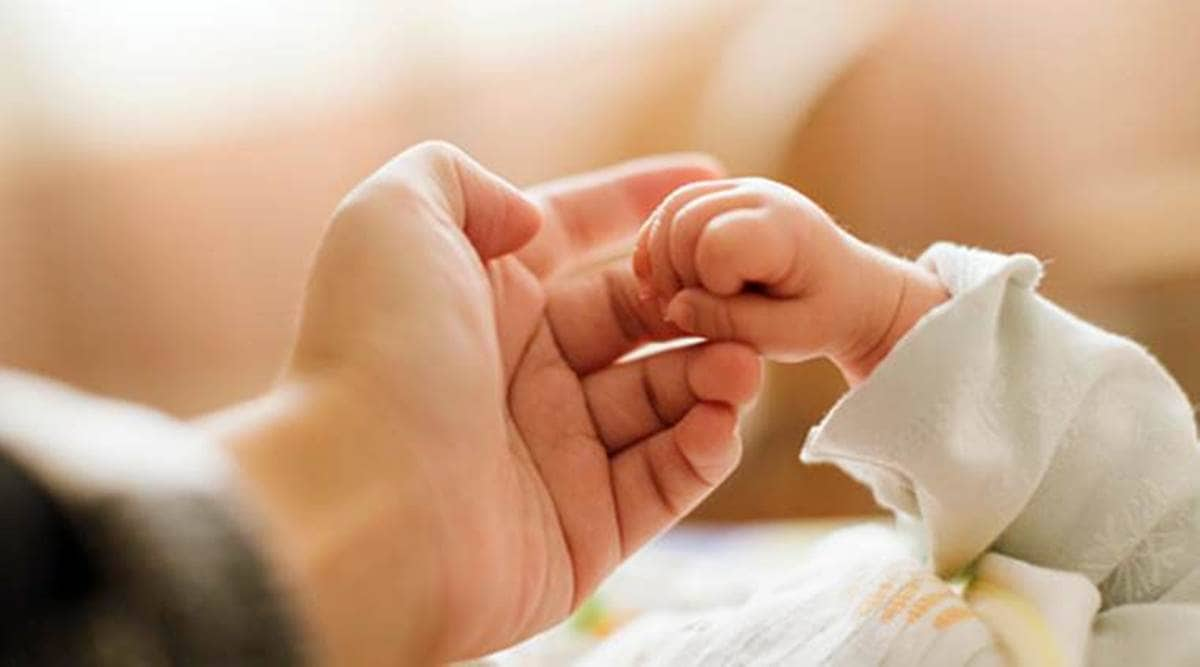 In 2019, Mumbai recorded 1,52,952 births. In 2020, the number dropped to 1,20,188. (Representational)
In 2019, Mumbai recorded 1,52,952 births. In 2020, the number dropped to 1,20,188. (Representational) Mumbai, India’s most populous city and the epicentre of the first wave of Covid-19, saw a 20 per cent slump in live births in 2020 from the previous year. The wards with the highest Covid-19 cases recorded the biggest drop in live births in Mumbai.
Public health officials in the Brihanmumbai Municipal Corporation (BMC) and doctors said that anxieties about the future during the pandemic and safety of the newborn, and conversion of public hospitals to COVID-19 centres may have led many women and couples to put off plans of having children, while the massive out-migration from Mumbai could be another factor for the steep drop in the number of live births in the city.
With an estimated 2 crore population, India’s financial capital has recorded an average of 1.5 lakh live births annually since 2016, the year from which The Indian Express has accessed data.
But from the start of the pandemic in March 2020, the city has been witnessing a steady fall in live births, according to numbers accessed from BMC.
In 2019, Mumbai recorded 1,52,952 births. In 2020, the number dropped to 1,20,188. For 2021, until November 30, the number of births was down by one-third of that of 2019, at 1,01,308.
In 2016, the city registered 1,52,952 live births, which increased to 1,55,386 the next year. In 2018, it declined slightly to 1,51,187.
Almost 40% of the city’s population lives in densely populated slums, as per the census 2011. When the pandemic started, many slums such as Worli Koliwada in G-South ward (Elphinstone), Dharavi—the largest slum in Asia — in G-North ward among others turned into Covid hotspots. Some of these are also places where most migrants live. The first national lockdown saw lakhs of migrants, including pregnant women, leaving the city. Officials in the civic body said the dip in live births may be due to this.
For instance, in M-East ward where 80% of the population resides in slums, live deliveries dropped by 29% in 2020 from 7,058 to 4,953. Last year, amid the pandemic, NGO Apnalaya conducted a survey among 342 pregnant women in the ward’s Shivajinagar, where 38% of the women had returned to their native villages to complete their pregnancy.
In Dharavi, from where thousands of migrants went back to their homes in other states during the lockdown, there was a 26.7% fall in live births in the ward. In 2019, the ward had 3,014 live births, which plummeted to 2,208 in 2020. Also, G-South witnessed a 37% dip as live birth dropped from 1,337 to 842.
“Migrant women who were pregnant before the start of the pandemic or in the early months decided to leave the city with the highest Covid-19 cases and go to their villages in the neighbouring states,” said Kiran Dighavkar, ward officer G-South ward.
Other than the slums, areas which recorded a high number of Covid-19 cases also saw a plunge in deliveries. Ward medical officers said that as most hospitals during the pandemic’s peak were converted into Covid-19 hospitals, many couples delayed their family planning or shifted to their native places outside Mumbai.
For instance, K-West ward (Andheri West), with the highest number of Covid-19 cases among the 24 wards, recorded nearly 30% dip in live deliveries from 7,527 to 5,877 in the same period. The R-South ward, that ranks in the top four wards with the most Covid-19 cases, saw live deliveries dropping from 10,081 to 6,079, a steep fall of 39.6%.
“Although most of the hospitals were converted into Covid hospitals, we kept the maternity homes reserved only for pregnant mothers. In fact, safety protocols were provided to private hospitals for the treatment of pregnant women,” said Suresh Kakani, Additional Commissioner, BMC.
Among the 24 wards, only M-West that covers Chembur, and C ward which includes Marine Lines, recorded a rise in live deliveries in the same period.
Local health volunteers say that some live deliveries might have gone unreported as many pregnant mothers opted for home deliveries with the help of midwives, especially in slums, in order to avoid going to hospitals and exposing themselves to the virus.
Data from BMC shows that in 2019, a total of 353 home deliveries were reported, which dropped to 256 in 2020. But in 2021, until November 30, the number of home deliveries was 400. Due to the fewer births, the cases of stillbirth in the city also dropped by 21%. In 2019, 1,373 stillbirths were reported in Mumbai, which decreased to 1,091 next year amid the pandemic and dropped further to around 900 till November 2021.
- The Indian Express website has been rated GREEN for its credibility and trustworthiness by Newsguard, a global service that rates news sources for their journalistic standards.

